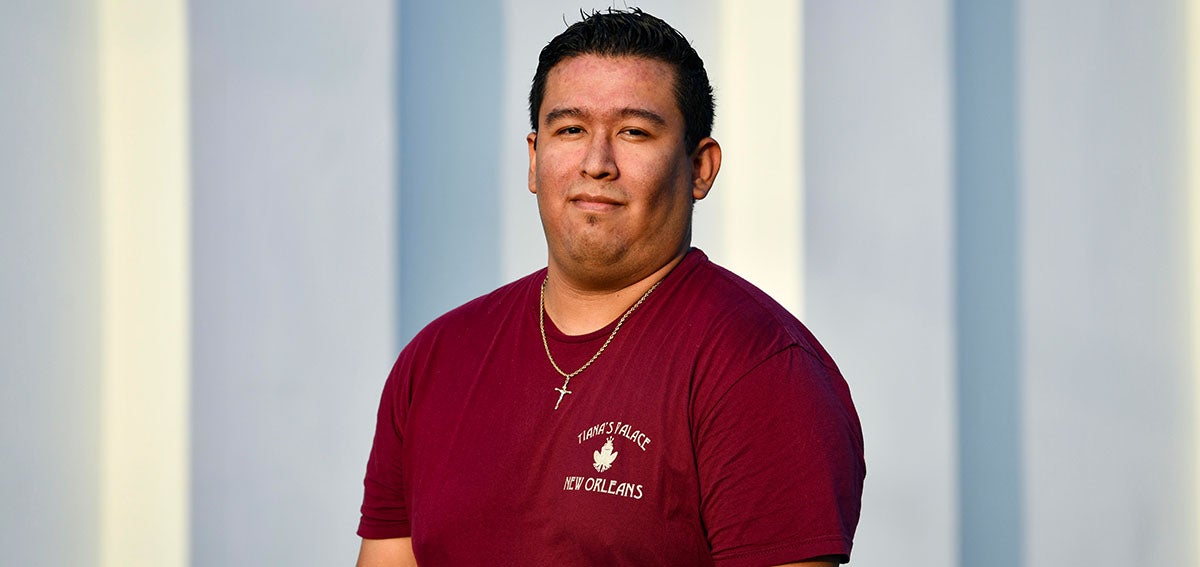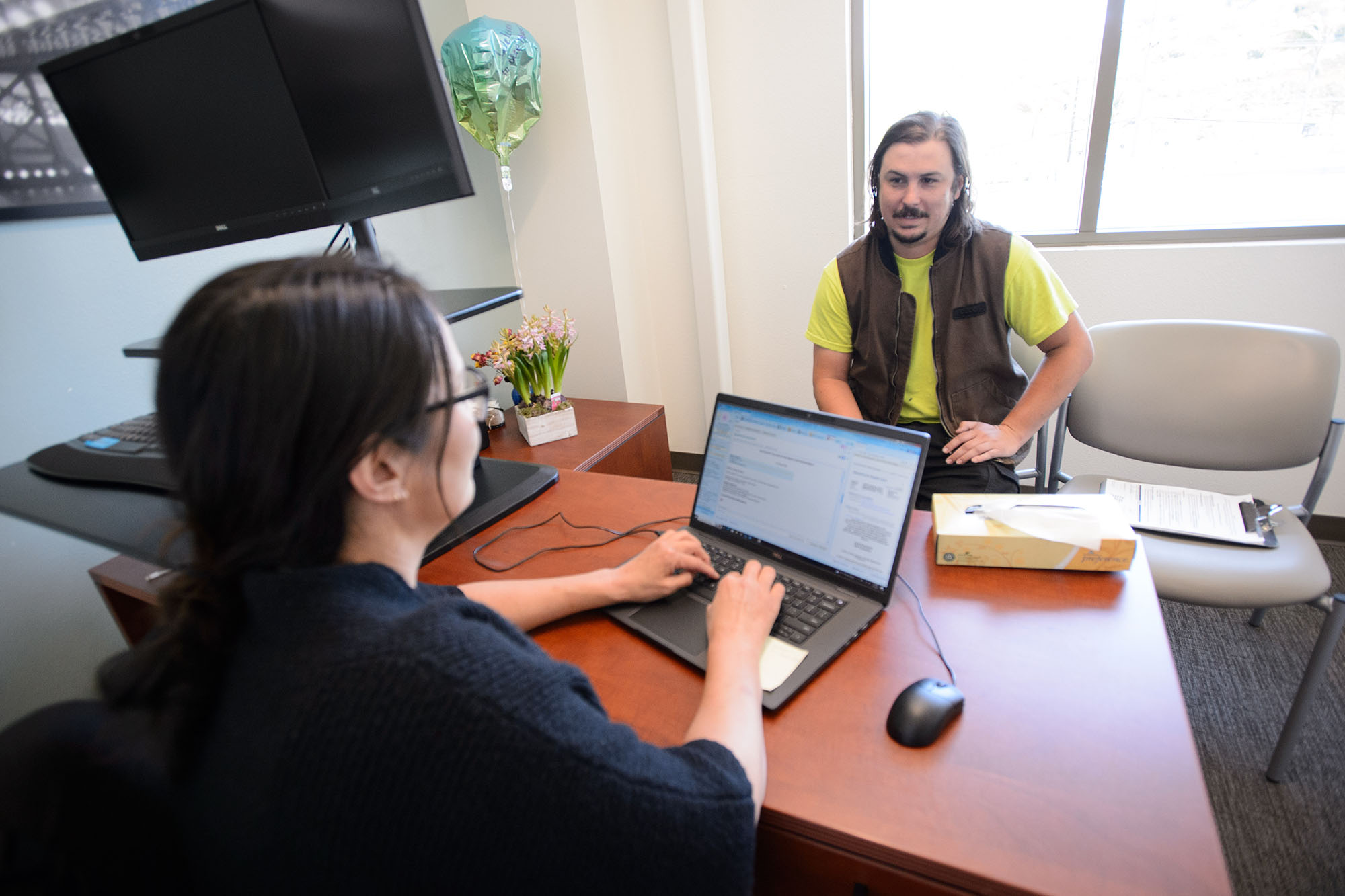
When Miguel Isidro’s primary care provider offered to do his annual checkup over Zoom instead of in person at the clinic, the 29-year-old insurance claims examiner hesitated.
About Listening to Californians with Low Incomes
CHCF partnered with NORC, a national research organization, to conduct a statewide survey of the health care experiences of California residents between 18 to 64 years old who received health care since March 2019. The survey included an oversampling of residents with low incomes. NORC asked respondents about their health care concerns, experiences, and access before and during the COVID-19 pandemic, as well as about their experiences with racial discrimination and the pandemic’s impact on employment and insurance coverage.
The report, published in October 2020, highlights key survey findings focused on telehealth experiences, health care access, mental health, pandemic-related stresses, and experiences with racial discrimination. CHCF plans to interview Californians with low incomes to add important context to the numerical findings and to document their experiences in their own words. A final report with the interviews will be released in early 2021.
It was April, the height of California’s lockdown to slow the spread of COVID-19, and going in person to the doctor’s office didn’t seem safe. But seeing the doctor on a video? Isidro had never considered that possibility before. He wondered if he would really be able to get the help he wanted for a skin problem if his provider could only see him on a screen.
“I was actually worried,” said Isidro, who lives with his parents and two younger siblings in El Monte, a predominantly Latinx city in east Los Angeles County. “He might prescribe me the wrong medication. Or maybe he might not diagnose me correctly since I wasn’t personally there to talk with him.”
But when the doctor’s face appeared on Isidro’s laptop, he relaxed. Instead of spending most of the visit looking down and writing on a notepad, as often happened at in-person visits, the physician asked a lot of questions and seemed to listen more intently. He diagnosed Isidro’s skin problem as seborrheic dermatitis, recommended an over-the-counter lotion, and referred Isidro to a dermatologist for later follow-up.
“I felt really good with the way the service was rendered,” said Isidro. “I even considered doing it again.”
Listen to Miguel tell his story.
Statewide Survey Results
Telehealth visits, either by video or phone, have become integral to providing health care during the pandemic, and the response has been positive. A CHCF statewide survey of almost 2,500 California residents (18 to 64 years old with an oversampling of respondents with low incomes), conducted by NORC at the University of Chicago, found that 62% of people who needed care since the start of the pandemic had visited their provider via telehealth. Residents with low incomes and people of color were most likely to have used telehealth. Among survey respondents who needed care during the pandemic, 65% of those earning below 200% of the federal poverty level (about $25,000 a year for one person) reported using telehealth, as did three out of four people of color.
Like Isidro, 66% of people needing care since March told NORC that their telehealth visit was better than they expected. In fact, almost three-quarters of those respondents who had a doctor’s visit by phone and 65% of those who had a video visit reported being more satisfied or just as satisfied with telehealth as they were with in-person appointments. Again, the rate of satisfaction was highest among respondents with low incomes and people of color. Among people of color, more than 60% said they would likely choose a phone or video visit over an in-person visit whenever possible in the future.
“For many Californians with low incomes, the ability to connect with a doctor or their care team by phone or video is the difference between canceling a visit because the barriers are too great or getting the timely care that they need.”
—Chris Perrone, CHCF director of Improving Access
The enthusiasm for telehealth by residents with low incomes, among whom people of color are disproportionately represented, isn’t surprising, said Chris Perrone, director of CHCF’s Improving Access team. Perrone’s group focuses on improving the way the health care system cares for residents with low incomes and those whose needs are not well served by the delivery system. People with limited resources often face considerable barriers to getting health care, he said. Many don’t have reliable transportation to get to a clinic, and some have to take time off work and forfeit pay to see a doctor. Those who live in rural areas with few providers might have to travel several hours to see a specialist. Parents often struggle to arrange and pay for childcare while they travel to an appointment.
“For many Californians with low incomes, the ability to connect with a doctor or their care team by phone or video is much more than a convenience,” said Perrone. “It’s really the difference between canceling a visit because the barriers are too great or getting the timely care that they or their child needs.”
Telehealth Use Surged This Year
While telemedicine has been around for years, until the pandemic, very few providers offered phone or video visits because insurance plans generally didn’t pay for them, Perrone said. That changed in March when California ordered insurance companies for the duration of the pandemic to reimburse providers for telehealth appointments at the same rates as in-person visits. This created a unique opportunity to study telehealth’s effectiveness and acceptance on a large scale, Perrone said.
“It’s really a remarkable time,” he said. “Instead of people saying, ‘Oh, I don’t have any experience with telehealth, and I don’t really want to try it,’ all of a sudden people had to try it. And once they’ve tried it, many are finding that it actually can be very beneficial.”
That’s the verdict of Jeanne Bjorgo, 63, a San Francisco resident forced by the pandemic to switch to telehealth meetings with her psychiatrist. The first visit was by phone, which Bjorgo didn’t enjoy because she likes to see her psychiatrist’s face. When they switched to meeting on video for the second appointment, Bjorgo said she almost preferred it to their regular, in-person sessions.
Before the pandemic, Bjorgo would devote a whole afternoon to seeing her psychiatrist because she doesn’t own a car and had to spend almost two hours riding the bus.
“It’s nice, just having the hour with her, and then I can do whatever I’m doing before and after, instead of taking up all that extra time for travel,” she said. “I think that [telehealth] is not going to stop once the COVID thing is over. I think people are probably realizing that it’s a great way of saving people time and money.”
Telehealth Does a Lot, but It Can’t Do Everything
Stephanie Burnham, 64, a semiretired writer and navy veteran in San Diego, was equally pleased not to have to trek across town for psychotherapy appointments at her Veteran’s Affairs clinic in the midst of the pandemic. She normally takes buses to get to appointments, but that can take up to an hour. Sometimes she takes an Uber, but that’s expensive given her limited income, she said. During her telehealth appointment, Burnham found she was more comfortable talking with the therapist from home than in the office.
“I just prefer being in my own place because you’re sharing private talk,” said Burnham, who suffers from post-traumatic stress disorder. “It’s great to do it in your own home where you feel no one else is listening.”
Burnham has also used phone and video visits several times for other types of appointments since the pandemic began, including when she thought she had COVID-19 (she didn’t), with a cardiologist who evaluated her heart palpitations, and with a sleep specialist who manages her sleep apnea.
Not all of the visits went well, said Burnham. While she was pleased with the COVID-19 and sleep-related appointments, the cardiology appointment was frustrating, she said. Burnham wanted the doctor to physically examine her and check her heart rate, but he couldn’t do that with a telehealth appointment. She said she’ll probably try to do in-person appointments in the future if she needs a hands-on checkup, but plans to opt for telehealth the rest of the time.
Burnham’s experience backs up what even ardent telehealth advocates freely acknowledge: Telehealth isn’t always the best or even an appropriate option. Some patients don’t have the private space or access to technology at home to comfortably conduct a telehealth appointment. The goal is to ensure telehealth is a practical option when clinically appropriate and that it reflects the patient’s preferences.
To ensure telehealth remains accessible to people like Burnham after the pandemic, Perrone said it will be important for California to enact policies that make coverage permanent for telehealth services. Providers will need to be educated about how to provide telehealth most effectively. Steps must be taken to ensure all consumers have access to the technology needed to access telehealth effectively, including broadband internet. Otherwise, telehealth could widen disparities.
Still, Perrone is hopeful. “It’s clear that patients want telehealth to stay,” he said. “We know that many Californians have challenges getting access to in-person care, and we believe telehealth — if done effectively and with the right policy supports — can be a great contributor to equalizing access and reducing disparities.”
Authors & Contributors

Claudia Boyd-Barrett
Claudia Boyd-Barrett is a longtime journalist based in Southern California. She writes regularly about health and social inequities. Her stories have appeared in the Los Angeles Times, San Francisco Chronicle, San Diego Union-Tribune, and California Health Report, among others.
Boyd-Barrett is a two-time USC Annenberg Center for Health Journalism fellow and a former Inter American Press Association fellow.

Harrison Hill
Harrison Hill is a documentary photographer and filmmaker based in Los Angeles, California. His work focuses on social justice issues centered around communities of color in the US.



